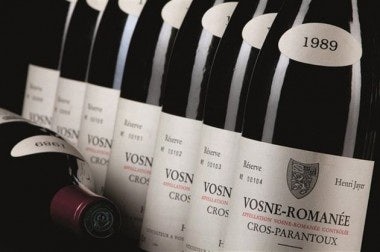China's Wine Market Expected To Consume 250 Million 9-liter Cases By 2015#

The high end of China's wine market may garner the most headlines, but winemakers around the world -- particularly in New World winegrowing regions -- are confident that long-term revenue growth lies not at the prestige nor the budget end of the spectrum but somewhere in the middle: in the "masstige" segment. While wealthy mainland Chinese wine collectors and their counterparts throughout Asia continue to stock up on top-flight Burgundy and Bordeaux at Hong Kong wine auctions, with one spending a jaw-dropping HK$2 million (US$265,147) on a twelve bottle case of 1985 Cros Parantoux at the recent sell-out Henri Jayer Burgundy auction, the country's middle class is interested in (and able to buy) imports priced in the 200-500 yuan (US$32-79) range.
It is in this "masstige" side of the market which American, Australian, Chilean and other wineries have started to target to greater success. As David Dearie, chief executive of Treasury Wine Estates Ltd., told the Wall Street Journal this week, rapidly increasing individual consumption should mean that, by 2015, the overall Chinese market will drink twice as much wine as it did last year and consume 250 million 9-liter cases. From the WSJ:
The key to growing market share is building its portfolio of so-called masstige products – premium items sold at an attainable price point. A masstige wine is priced between cheaper mass-market wines and higher-priced luxury labels, selling at between 14 and 20 Australian dollars (US$15-21) in its home country. In China, the retail price for those wines is double due to import duties and luxury taxes, but Mr. Dearie said that
the “luxury in the middle” wines have the greatest potential because of their strong branding
.
Mr. Dearie added that Treasury was looking to expand its offerings in China to more labels and tailor its marketing there by drawing on its history. Australian wineries like Wynn’s and Seppelt, for example, were built partly by migrant Chinese laborers who arrived in the late 19th and early 20th century and planted vines and dug the cellars of the wineries. Mr. Dearie thinks that connection can be part of its branding campaign in China.
“We’re mining the history of our brands, finding out our heritage,” he said. “We think [the Chinese] will appreciate our long history and China’s contribution.”
Though per capita wine consumption in China lags far behind France or the US, sitting at less than one bottle per person annually, dwindling consumption in established wine-drinking countries like France has given wine exporters greater urgency in tapping the new market, to the point that a growing number of wine industry giants have invested millions in the China market. Recently, following the lead of Les Domaines Barons de Rothschild (which developed 25 hectares of vineyards in Shandong province in 2008), the luxury giant LVMH announced plans to cultivate a 30 hectare vineyard in the mountains of Yunnan province, southwest China, and produce red wines specifically for the China market.
Clearly, as Jim Boyce of the Grape Wall of China blog recently pointed out, in China's wine market "there are plenty of niches to fill."
